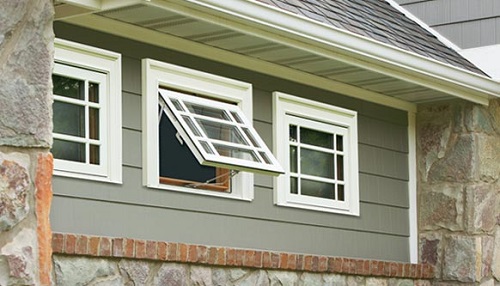Fresh air
The term ‘fresh air’ is commonly used to refer to air that is outside (or from outside) a building or enclosed space, as opposed to that which is inside. In order to ensure a good supply of fresh air, buildings need to be properly ventilated. Sometimes air that is not fresh is referred to as 'stale air'.
The provision of fresh air in a building is important to occupants’ wellbeing and has several benefits, including:
- Increasing oxygen availability and removing carbon dioxide.
- Maintaining a comfortable temperature.
- Enabling optimum brain functioning, increasing energy levels and improving concentration.
- Diluting and removing odours.
- Helping to moderate internal humidity.
- Reducing the accumulation of moisture, bacteria, dust, smoke and other contaminants.
Insufficient fresh air can result in occupants feeling tired, experiencing headaches, irritated eyes, and so on.
The Workplace (Health, Safety and Welfare) Regulations 1992 require that an employer does what is needed to make sure that every enclosed workplace is ventilated by a sufficient quantity of fresh or purified air. It states that the fresh air supply rate should not normally fall below 5-8 litres per second, per occupant. The appropriate rate should be decided by several factors, such as the amount of floor space per occupant, the work activity, possible sources of airborne hazards, and so on.
For more information see: Ventilation.
[edit] Related articles on Designing Buildings
- Air.
- Air conditioning.
- Air quality.
- Air Quality Taskforce.
- At a glance - Indoor air quality.
- Bringing a breath of fresh air to the design of indoor environments.
- Building related illness.
- Clean indoor air for healthy living - New air filter standards.
- Human comfort in buildings.
- Indoor air quality.
- Sick building syndrome.
- Re-circulation air.
- Stale air.
- Thermal comfort.
- Ventilation.
Featured articles and news
Government consultations for the summer of 2025
A year of Labour, past and present consultations on the environment, the built environment, training and tax.
CMA competitiveness probe of major housing developers
100 million affordable housing contributions committed with further consultation published.
Homes England supports Greencore Homes
42 new build affordable sustainable homes in Oxfordshire.
Zero carbon social housing: unlocking brownfield potential
Seven ZEDpod strategies for brownfield housing success.
CIOB report; a blueprint for SDGs and the built environment
Pairing the Sustainable Development Goals with projects.
Types, tests, standards and fires relating to external cladding
Brief descriptions with an extensive list of fires for review.
Latest Build UK Building Safety Regime explainer published
Key elements in one short, now updated document.
UKGBC launch the UK Climate Resilience Roadmap
First guidance of its kind on direct climate impacts for the built environment and how it can adapt.
CLC Health, Safety and Wellbeing Strategy 2025
Launched by the Minister for Industry to look at fatalities on site, improving mental health and other issues.
One of the most impressive Victorian architects. Book review.
Common Assessment Standard now with building safety
New CAS update now includes mandatory building safety questions.
RTPI leader to become new CIOB Chief Executive Officer
Dr Victoria Hills MRTPI, FICE to take over after Caroline Gumble’s departure.
Social and affordable housing, a long term plan for delivery
The “Delivering a Decade of Renewal for Social and Affordable Housing” strategy sets out future path.
A change to adoptive architecture
Effects of global weather warming on architectural detailing, material choice and human interaction.
The proposed publicly owned and backed subsidiary of Homes England, to facilitate new homes.
How big is the problem and what can we do to mitigate the effects?
Overheating guidance and tools for building designers
A number of cool guides to help with the heat.
The UK's Modern Industrial Strategy: A 10 year plan
Previous consultation criticism, current key elements and general support with some persisting reservations.
Building Safety Regulator reforms
New roles, new staff and a new fast track service pave the way for a single construction regulator.

























